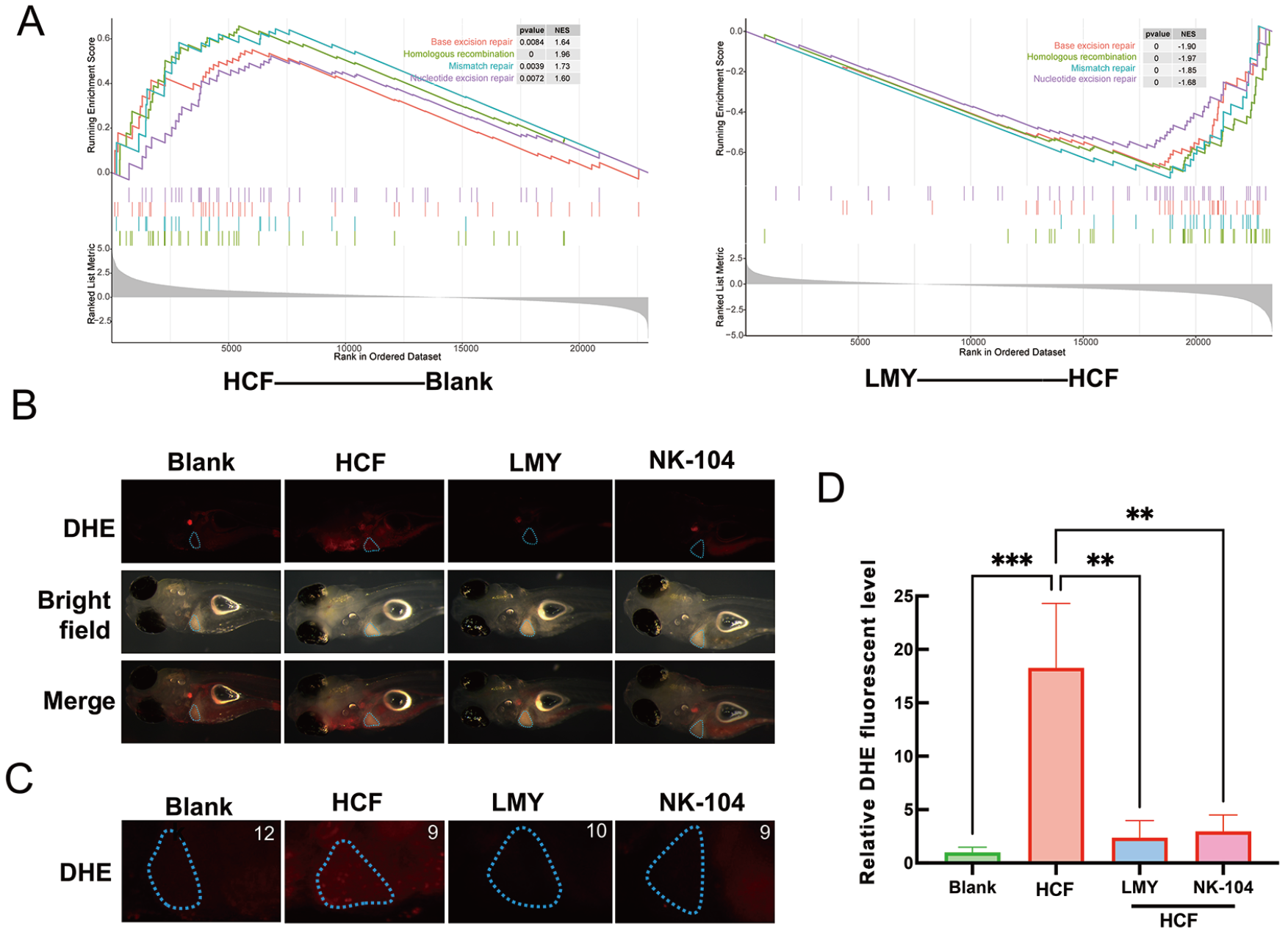Fig. 4 LMY ameliorates HCF diet-induced oxidative stress in vivo(A) GSEA analysis for DEGs enriched in DNA damage and repair pathways. The color of the curves represents the corresponding pathway labeled on the graph; Typical overall (B) and liver (C) images represent the superoxide in the zebrafish after different treatments. The Casper larvae were first fed with the HCF diet for three days, followed by a 6-day treatment with LMY and NK-104. The superoxide concentration was then determined by incubation with a DHE probe. The blue circle represents the liver area. (D) Quantification of red DHE fluorescence in the liver area. The red fluorescence intensity of HCF-fed zebrafish was defined as 100%. All these experiments were conducted three times in a double-blind manner, and the quantification results are presented as the mean±SEM. The number of zebrafish larvae involved in each experimental group is indicated in the top left corner of each image. **P<0.01, ***P<0.001. To further analyze the LMY therapeutic mechanism on NAFLD, a network was constructed via IPA, which revealed that several inflammation-related genes, CSF1/2, might play critical roles in the anti-NAFLD activity of LMY (Figure 5A). Considering that inflammation might be involved in NAFLD, especially when liver cells undergo oxidative stress and DNA damage, a colo1a: EGFP transgenic Casper zebrafish was used. In this transgenic line, macrophages and neutrophils were labeled with green fluorescence, allowing us to observe inflammation in living individuals. The results demonstrated that the HCF diet initiated inflammation in the zebrafish liver, as indicated by the aggregation of macrophages and neutrophils in the liver area. This inflammation was reversed after treatment with LMY for 6 days (Figure 5B‒D). These results indicate that LMY reverses HCF diet-induced inflammation in the liver.
Image
Figure Caption
Acknowledgments
This image is the copyrighted work of the attributed author or publisher, and
ZFIN has permission only to display this image to its users.
Additional permissions should be obtained from the applicable author or publisher of the image.
Full text @ Acta. Biochim. Biophys. Sin (Shanghai)

